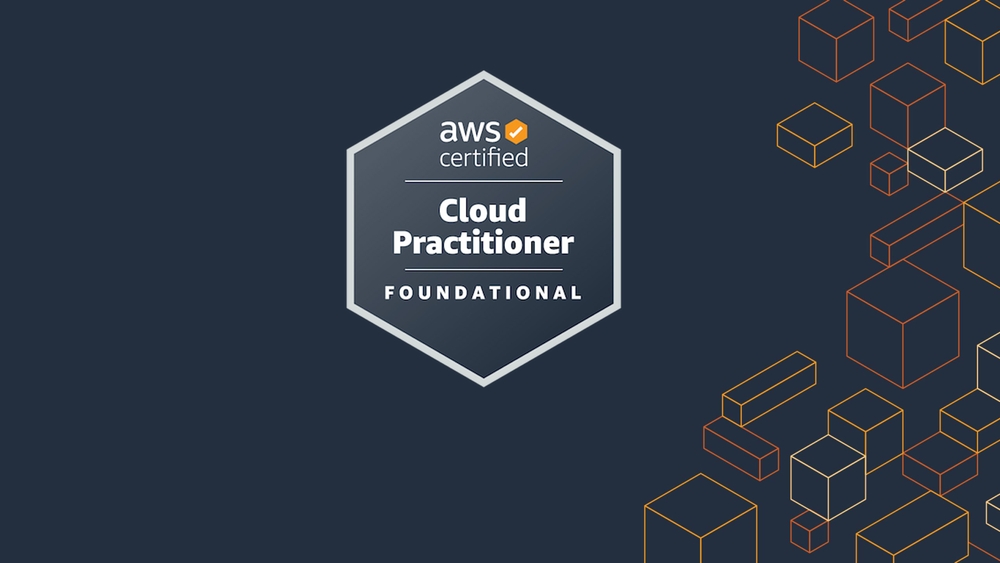Published
- 4 min read
AWS Certified Cloud Practitioner

Check out my AWS Certified Cloud Practitioner badge 🏆 Issued by Amazon Web Services Training and Certification.
The AWS Certified Cloud Practitioner certification is an entry-level certification that validates your understanding of AWS cloud concepts, services, and fundamentals. It is ideal for individuals who want to gain foundational knowledge of AWS, including business and technical professionals.
Key Concepts for the Exam
1. Concepts and Technology
- What is Cloud Computing: Understand the basics of cloud computing, its benefits, and types (IaaS, PaaS, SaaS).
- Types of Cloud Models:
- Public, Private, and Hybrid Clouds
- Cloud Economics:
- AWS Pricing Models: Pay-as-you-go, Reserved Instances, Spot Instances
- Total Cost of Ownership (TCO) and return on investment (ROI) in cloud.
2. AWS Global Infrastructure
- Regions: Physical locations where AWS has data centers. A region contains at least two Availability Zones.
- Availability Zones: Isolated locations within a region that can run independently.
- Edge Locations: Used for content delivery (CloudFront) and caching.
3. AWS Core Services
-
Compute:
- Amazon EC2: Virtual servers, pricing models, autoscaling, and load balancing.
- AWS Lambda: Serverless computing for running code without provisioning servers.
- Elastic Beanstalk: PaaS for deploying applications.
-
Storage:
- Amazon S3: Scalable object storage with different storage classes (Standard, IA, Glacier).
- Amazon EBS: Block storage for EC2 instances.
- Amazon EFS: File storage for shared file systems.
-
Databases:
- Amazon RDS: Managed relational database service.
- Amazon DynamoDB: Managed NoSQL database service.
- Amazon Redshift: Data warehousing service for analytics.
-
Networking:
- VPC: Virtual Private Cloud allows users to create a private network in AWS.
- Elastic Load Balancing (ELB): Automatically distributes incoming traffic across multiple instances.
- Amazon Route 53: DNS service for domain registration and routing.
-
Security and Identity:
- IAM (Identity and Access Management): Users, groups, roles, policies, and permissions.
- AWS Organizations: Account management for multiple AWS accounts.
- AWS Shield & WAF: Security protection against DDoS attacks.
4. AWS Well-Architected Framework
- Operational Excellence: Running and monitoring systems.
- Security: Protecting data, systems, and assets.
- Reliability: Ensuring the infrastructure can recover from disruptions.
- Performance Efficiency: Efficient use of computing resources.
- Cost Optimization: Minimizing costs while maintaining performance.
5. Billing and Pricing
- Free: Services that are free for a limited time or permanently.
- AWS Pricing Calculators: Estimating the cost of AWS resources.
- AWS Support: Basic, Developer, Business, and Enterprise.
- Consolidated Billing: Managing multiple AWS accounts and consolidating payments.
6. AWS Shared Responsibility Model
- AWS is responsible for the security of the cloud (infrastructure, data centers).
- Users are responsible for security in the cloud (data, encryption, access management).
7. Compliance and Governance
- AWS CloudTrail: Enables governance, compliance, and risk auditing by logging all AWS account activity.
- AWS Trusted Advisor: Real-time best practice checks for cost optimization, security, fault tolerance, and performance.
Preparation Strategies:
1. Review the Official Exam Guide:
- Familiarize yourself with the exam blueprint to understand the domains and weightings.
2. Use AWS Free Tier:
- Hands-on experience with key services like EC2, S3, and IAM will improve your understanding and retention of core concepts.
3. AWS Training and Documentation:
- Use AWS Training’s free Cloud Practitioner Essentials course.
- Review AWS whitepapers like the Well-Architected Framework, Shared Responsibility Model, and pricing models.
Here’s my recommendation for training courses:
- AWS training course from AWS Skill Builder
- Ultimate AWS Certified Cloud Practitioner CLF-C02 by Stephane Maarek
- AWS Certified Cloud Practitioner (CLF-C02) Exam Training by Neal Davis
- AWS Certified Cloud Practitioner Practice Exams CLF-C02 2024 from Tutorials Dojo
- Cloud Guru
4. Practice Exams:
- Take AWS practice exams and use third-party platforms like Whizlabs or A CloudGuru to get comfortable with the question format and timing.
5. Flashcards for Key Terms:
- Use flashcards to memorize key concepts, such as service names, pricing models, and IAM roles.
6. Join AWS Community and Forums:
- Engage with the AWS user community, forums, and Slack channels to share insights and ask questions.
7. Reinforce Knowledge with Quizzes:
- Regular quizzes reinforce your learning and highlight areas for improvement.
Exam Tips for Success:
1. Time Management:
- Allocate time for each section and be mindful of how much time you’re spending on difficult questions.
2. Eliminate Wrong Answers:
- If unsure, eliminate clearly wrong answers to improve your chances of choosing the right one.
3. Focus on Core Services:
- The exam emphasizes foundational services like EC2, S3, and IAM, so prioritize learning these services in depth.
4. Understand Use Cases:
- Be familiar with real-world scenarios where different AWS services would be used.
By combining structured study, hands-on practice, and consistent review, you’ll be well-prepared for the AWS Certified Cloud Practitioner exam.